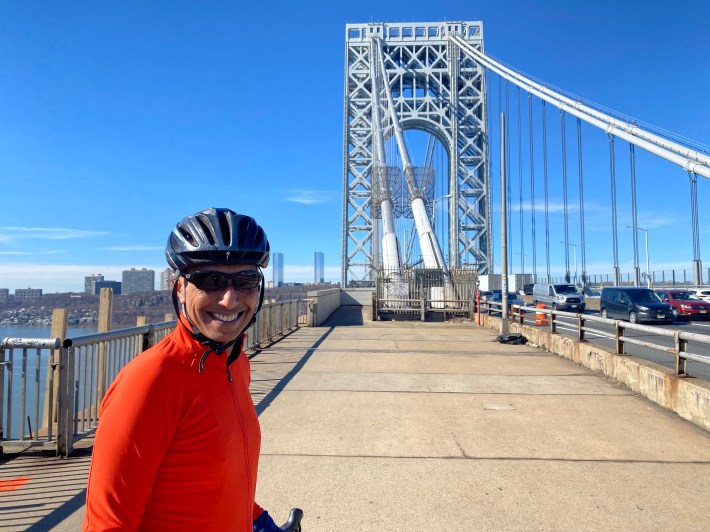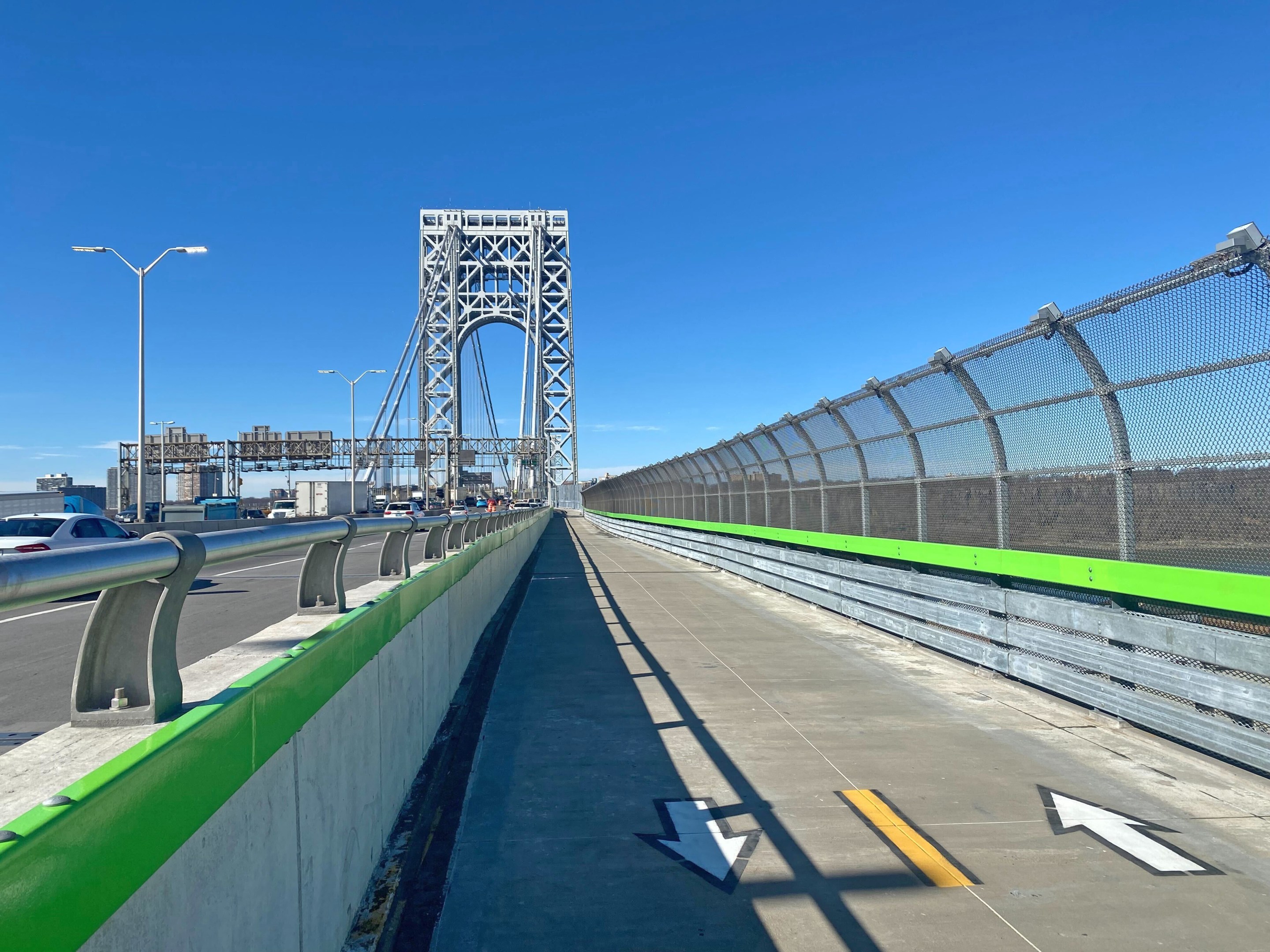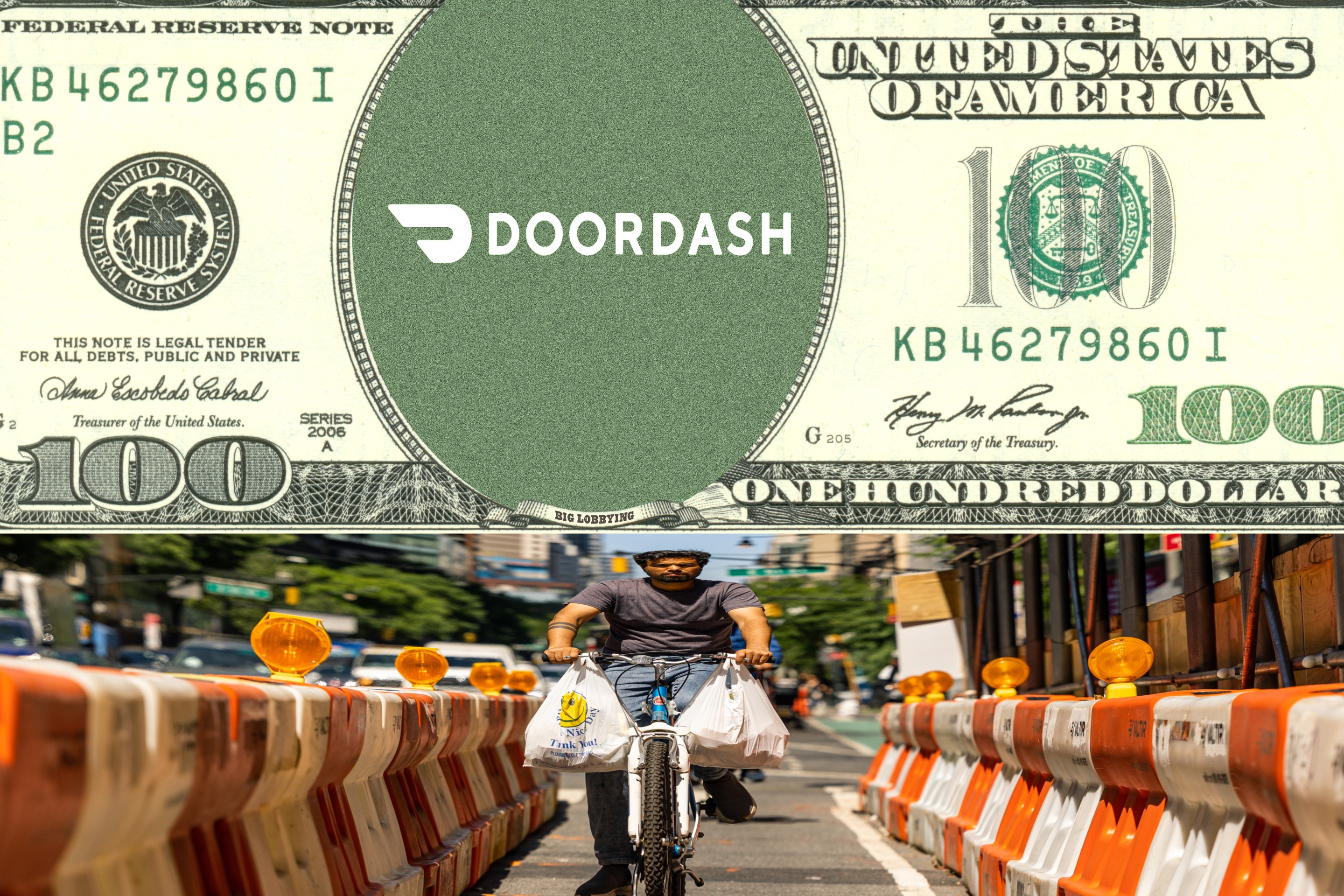The long-shuttered pedestrian and bike path on the north side of the George Washington Bridge has reopened with brand new entrances on both ends of the 92-year-old span connecting upper Manhattan and New Jersey.
The new on-ramps are now ADA-compliant and give the thousands of daily cyclists and walkers more space to get to the bridge itself, but the rebuilt shared path on the 1931 span remains as narrow as it was before the overhaul.
The bridge's south outer path will close on Wednesday for a similar renovation that will take four years, the Port Authority said.
The revamps began in 2017 and are part of a $1-billion project to replace the bridge's suspender ropes for the first time. Work on the on-ramp began around 2020, according to officials.
The Authority built a plaza at the entry of the northern path on W. 180th Street and Cabrini Boulevard in Washington Heights leading onto the new curving on-ramp, which is about two-thirds-of-a-mile long.
The redone access points get rid of the 171 steps people had to mount to get onto the bridge — most of them on the New Jersey side — before walking up a narrow path to the bridge.
There's a set of new platforms on either side to take in the stunning Hudson River views, before the path winds onto the span itself, where the Authority replaced the concrete sidewalk and added new fencing, but the two-way foot and bike path remains a maximum of only 6-foot-10 wide, narrowed at points by bridge cables.
OPINION: THIS GEORGE WASHINGTON BRIDGE FIX IS JUST NOT GOOD ENOUGH
The total path is about a mile-and-a-half long, and the Authority got rid of sharp right-angle pinch points around the two towers by expanding their platforms.
There's also new lighting, signs, surveillance cameras, and higher fencing along the entrance and the path.
The project is part of the Port Authority's larger $2 billion "Restore the George" program with 11 projects to bring the old 14-lane double-decker suspension bridge into a state good repair.
Once the Authority wraps repairs on south path in four years, pedestrians will move there while the cyclists stay on the northern path, said Ken Sagrestano, the Port Authority's general manager for George Washington Bridge and Bus Station, who gave Streetsblog an exclusive first look on Monday.
"We’re going to separate the two user groups unless there’s a reason we have to combine them for construction or something," said Sagrestano. "That’s going to be the big improvement."
The bridge's southern path counted 709,000 crossings in 2022, according to officials — nearly 2,000 a day — including some 388,000 cyclists and 321,000 pedestrians.
The Port Authority closed the northern path after 9/11, reopening it occasionally when they had to do work on the southern path.
The narrow promenade on the south is not nearly big enough and walkers, runners, and cyclists, causing many crashes, according to locals.
"It’s like a standoff, it’s like a game of chicken," said Washington Heights resident Daniel Mantelli, who said he walks the bridge almost every day.
Its old tight and steep ramp has hairpin turns and the entrance was just a narrow sidewalk away from the highway off ramp from the bridge's car lanes.
Advocates and local politicians have urged officials to build a bigger bikeway for the bridge, including the proposal by longtime advocate Neile Weissman dubbed "Complete George," which calls for a wider structure for bikes below the south walkway.
"People will initially go, ‘This is wonderful, this is delightful, thank you to the Port Authority for doing this,’ but [the path] still necks down every 60-odd feet to under seven foot wide," Weissman told Streetsblog.
Both paths will still fall short of the 14 feet preferred by the Federal Highway Administration and the 16 feet recommended by the American Association of State Highway and Transportation Officials, but Sagrestano said expanding the paths along the bridge would have been "cost-prohibitive."
"On the span, we didn’t change the width because it would’ve been hundreds and hundreds of millions of dollars" to cantilever a wider path outside of the current bridge footprint, he said.
Regarding the Complete George proposal he said:
"It was not something that the Port Authority was actively looking at as an alternative.”
Cyclists said the new entrances and exits will make a big difference, even if the rest of the bridge remains the same size.

"The ons and offs and the turns — those are the most dangerous places," said Tribeca resident Sundeep Mangla as he cycled to New Jersey. "I think it’s great. It’ll be a lot safer."






